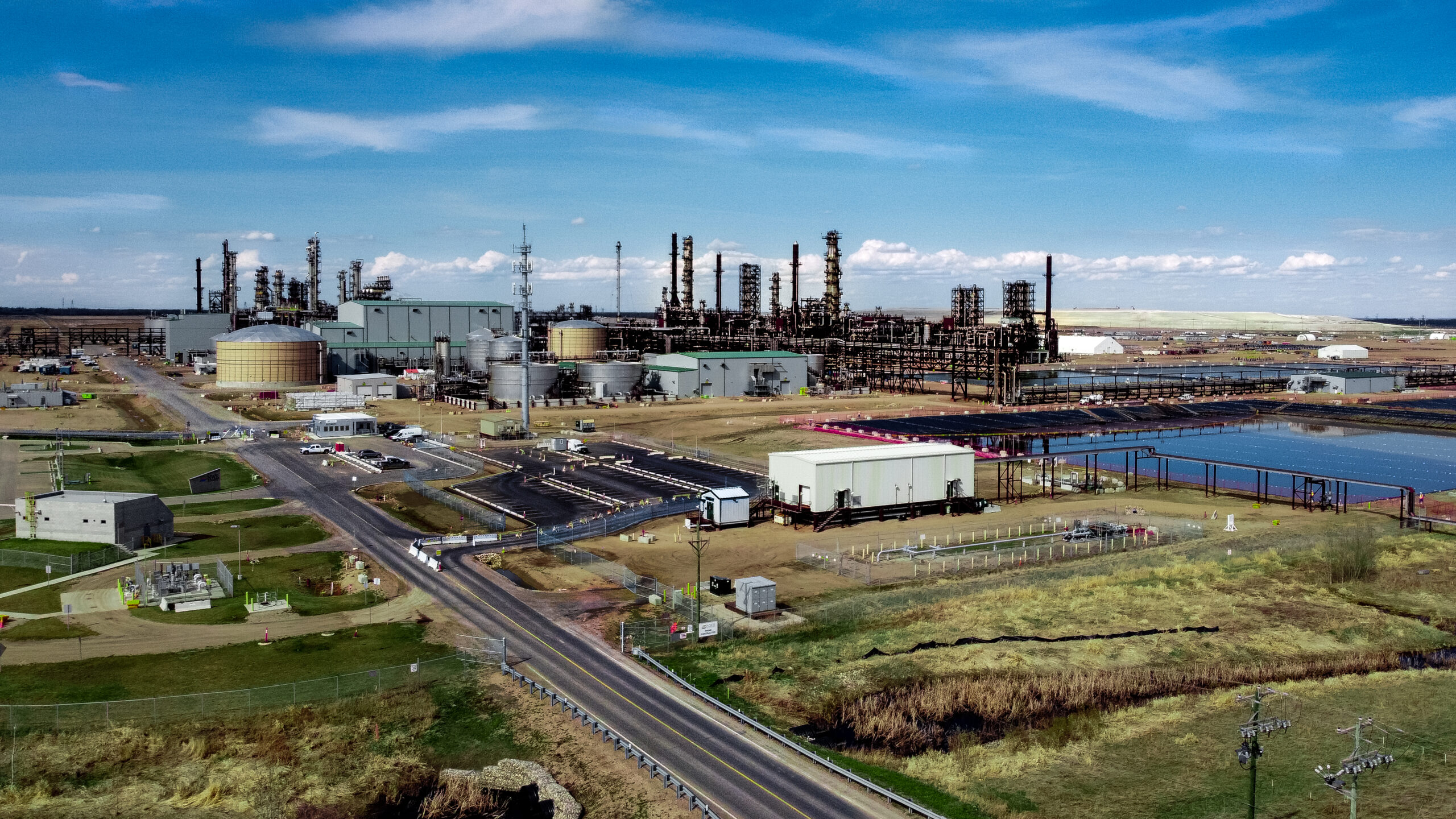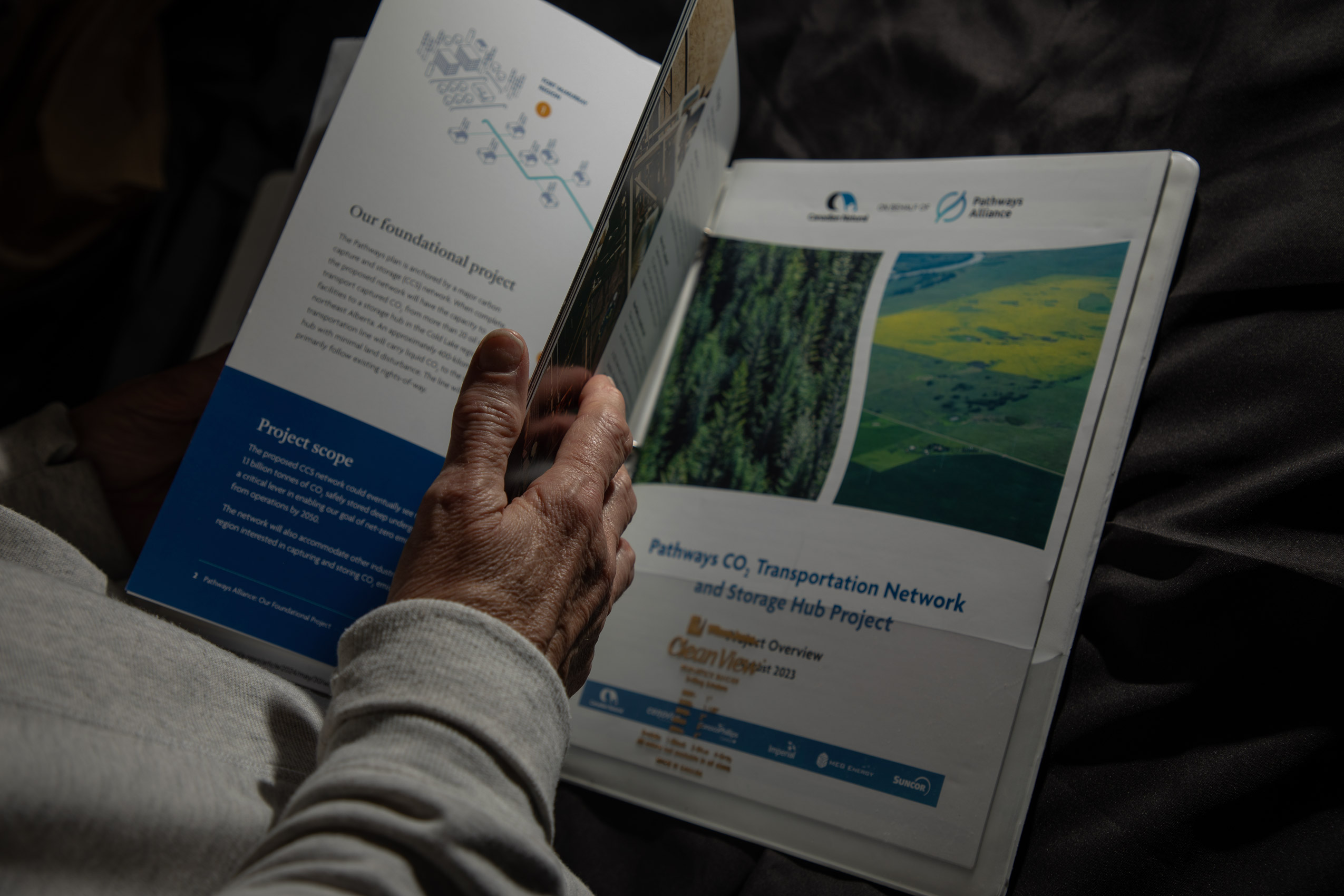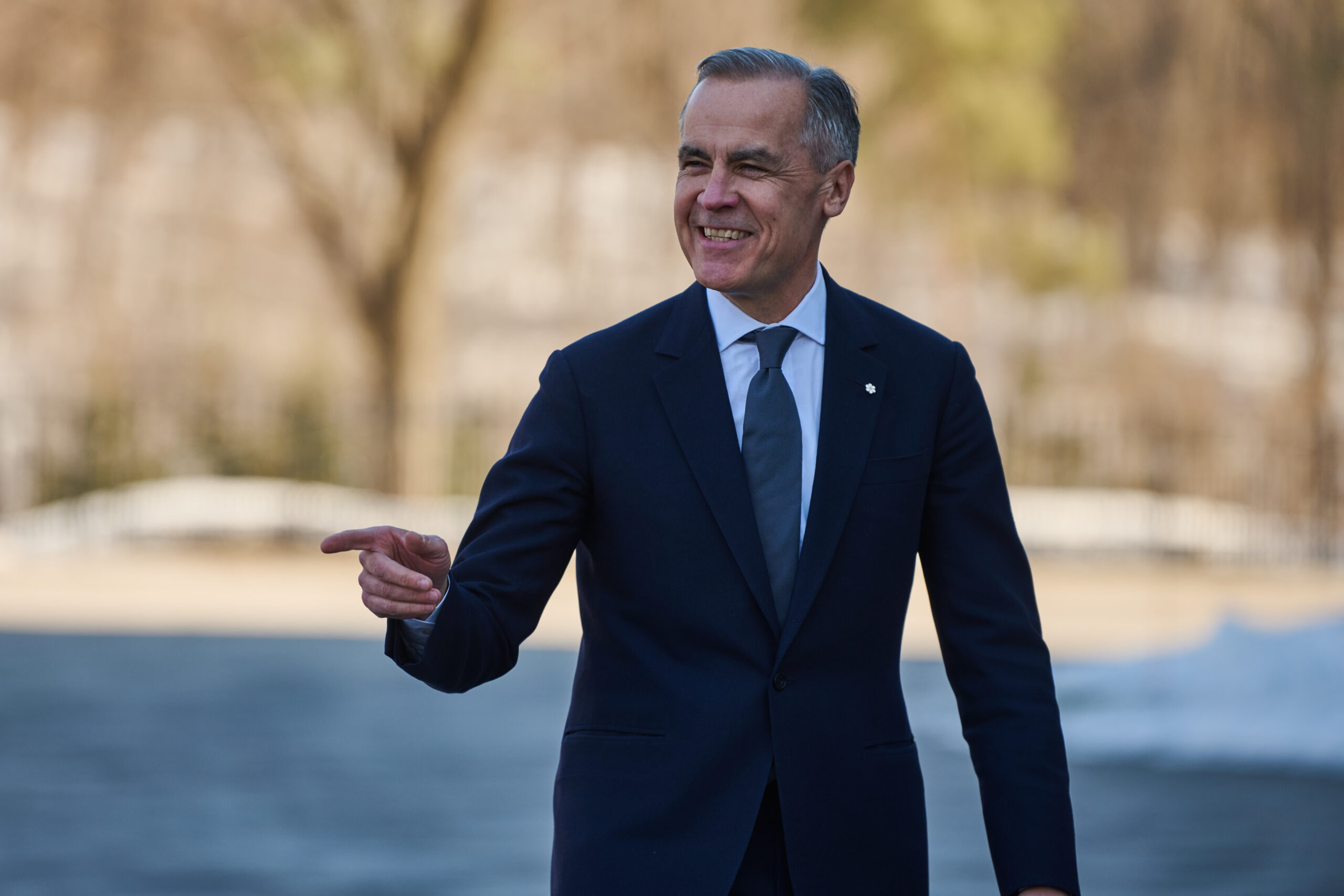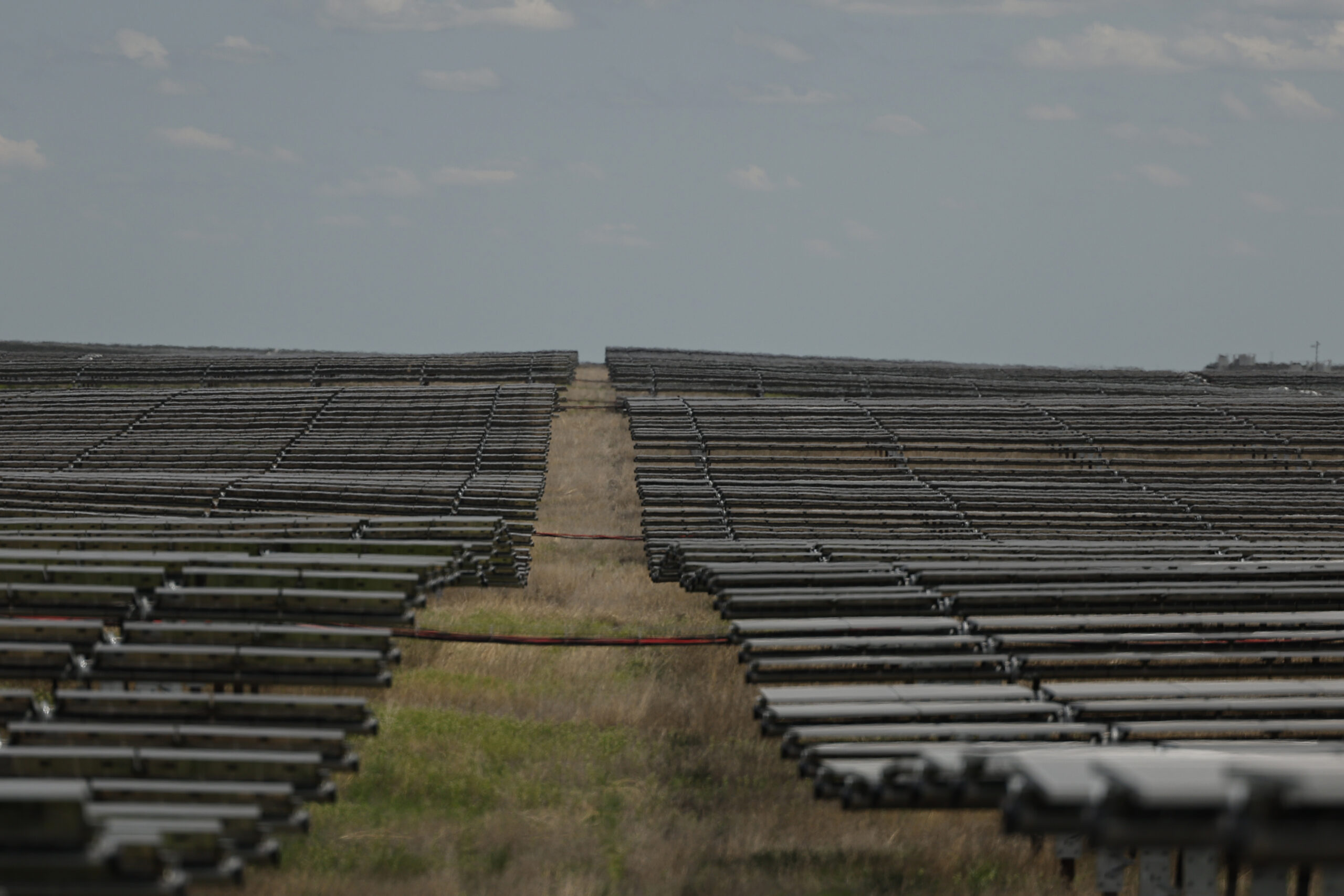
5 things to know about Winnipeg’s big sewage problem
115 billion litres, 70 years to fix, $5.5 billion in lawsuits
Get the inside scoop on The Narwhal’s environment and climate reporting by signing up for our free newsletter.
The Alberta government is considering killing its industrial carbon tax, according to an industry association email obtained by The Narwhal.
The email, sent by the Canadian Renewable Energy Association on Wednesday night, said staff met with senior government officials on March 25 and were told Alberta is considering three options for the future of its provincial price on carbon, including removing it altogether.
The meeting, which multiple sources told The Narwhal was part of a broader stakeholder consultation, took place shortly after federal Conservative Leader Pierre Poilievre changed direction and promised to eliminate industrial carbon pricing at a national level.
The association said in the email it was invited to the meeting without any details, was not allowed to keep copies of slides presented at the meeting and was told there would be no further consultation on the future of what’s called the Technology Innovation and Emissions Reduction regulation (commonly referred to as TIER) — the province’s current industrial carbon pricing plan that was introduced in 2020.
Essentially, the province sets a price on carbon emissions and companies can either pay that price into a fund, reduce their emissions or trade emissions credits to comply.
The money collected from the price on carbon is used to fund emissions reduction technologies across the province.

According to the email, the three options the government is presenting for a new system are:
Spokespeople for the premier, the minister of environment and protected areas and the minister of affordability and utilities did not respond to emailed questions and requests for interviews by publication time. The Narwhal is not disclosing how it obtained the email in order to protect a source.
The email, sent from Radha Rajagopalan, the Alberta director of the Canadian Renewable Energy Association, said none of the options are set up to comply with the federal system, which is a requirement if a province chooses to run its own industrial carbon tax system.
The association would prefer to maintain the system as is, but said the first option is the best if change is inevitable.
The meeting was with staff from Alberta Environment and Protected Areas, including Patrick MacDonald, the assistant deputy minister of air, climate and clean technology, who previously worked for the Canadian Association of Petroleum Producers, the largest lobby group for the oil and gas sector in Canada.

Andrew Leach, a professor of economics and law at the University of Alberta who also helped design Alberta’s climate plan under the previous NDP government, said the options on the table present a challenge.
If the government allows companies to invest in technologies rather than pay a price on carbon, it will be forced to evaluate what constitutes a new investment that wouldn’t have just happened anyway — something Leach said governments are not very good at doing.
“And you are sort of pretending that you have an emissions pricing program when probably, you really don’t,” he said.
Poilievre’s proposal to eliminate industrial carbon pricing at a national level would remove the need for consistency across the country and allow provinces to design their own systems and carbon prices, or scrap them entirely. His chief opponent in the 2025 federal election, Liberal Leader Mark Carney, supports industrial carbon pricing.
Alberta Premier Danielle Smith supported Poilievre’s promise, and on Wednesday, Saskatchewan Premier Scott Moe said his province would kill its industrial carbon tax.
It also comes as the country grapples with the economic and political threats from the United States and the potential for on-again, off-again tariffs.

Leach said that reality has shifted the conversation and allowed for companies, and governments, to float the idea of killing carbon pricing.
“If you give industry the choice between stringent regulation or flexible regulation with pricing, they’re going to choose the flexible regulation with pricing every time,” he said, referring to current industrial carbon pricing.
“But that’s not the choice that’s now on the table. The choice is less stringent regulation, or no regulation of emissions, versus existing relatively stringent emissions pricing.”
Industry, he said, won’t just “devote capital to reducing emissions just for the sake of it.”
Killing the industrial carbon price in Alberta could have a profound and negative effect on emissions reduction technology investments, including renewable energy.
It would also kill a highly effective emissions reduction policy.
According to an analysis from the Canadian Climate Institute, the industrial carbon pricing system is the single biggest policy that reduces emissions nationally, responsible for between 20 and 48 per cent of Canada’s emissions reductions in 2030. Emissions reductions are necessary to address climate change, which is caused by heat-trapping greenhouse gases like carbon dioxide and methane, leading to more frequent, more intense extreme weather such as wildfires and floods.
Money collected through Alberta’s fund goes to everything from clean electricity, to new uses for carbon such as transforming carbon dioxide into carbon nanotubes.
Evan Wilson, the vice-president of policy for Western Canada and national affairs with the renewable association, was in the government meeting. He said the association was expecting a review of the system, due in 2026, but he was careful not to speculate on the impact of killing the carbon price in an interview with The Narwhal.
He said some of the options are “more aligned with continuing the success for the renewable energy sector,” while “some of them probably would be more challenging for our members to to understand how to make future investments in the province.”

If the system was to be scrapped, however, it would pose a serious risk to renewable energy projects, including existing wind and solar installations.
Wilson said approximately half of the 8,000 gigawatts or power generated by renewables are supported by what are known as power purchase agreements. Those agreements allow corporations to fund renewable power generation and gain emissions credits for compliance with the provincial carbon scheme.
Many of these contracts, he said, are dependent on 15 to 20 years worth of credits being sold.
“So these credits and [the Technology Innovation and Emissions Reduction program] are essential for a large portion of these projects to operate,” Wilson said. “And we are really working hard to ensure that they exist post-[Technology Innovation and Emissions Reduction] consultation.”
The association told its members that it met with Affordability and Utilities Minister Nathan Neudorf and was told the ministry is “aware of the consultation and is concerned about changes to [the Technology Innovation and Emissions Reduction regulation] amid all the other changes at play for the electricity sector as a whole.”
Leach said Canada’s industrial carbon tax was designed to ensure costs remained low for industries that were exposed to international trade in order to keep them competitive. He said the trade war with the U.S. means a conversation about the system is critical, but believes Canada, or the provinces, should not abandon emissions policies, or cave to critics using the current crisis as an opportunity.
“You can look and see that many of the people who were saying ‘we can’t do emissions policy today because X,’ have been saying we can’t do emissions policy at all previous points in the past for other reasons,” he said.
“So I think there are lots of people who are grasping the moment today to say, well, this is today’s reason.”
Get the inside scoop on The Narwhal’s environment and climate reporting by signing up for our free newsletter. On a warm September evening nearly 15...
Continue reading
115 billion litres, 70 years to fix, $5.5 billion in lawsuits

Climate change, geopolitics and business opportunities power a blue economy

10 billion litres of sewage are dumped into Winnipeg’s lakes and rivers each year. Some...
